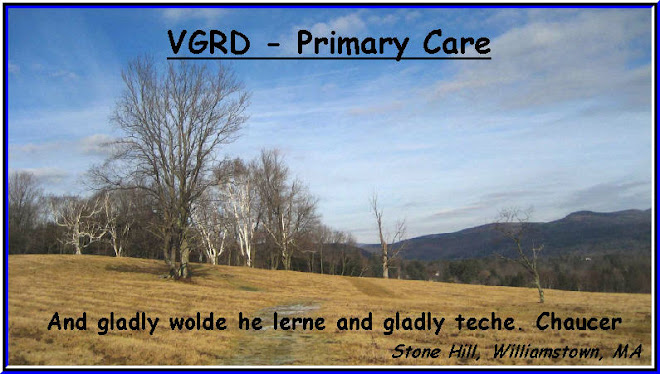History: Shortly after birth the mother noted a yellowish alopecic area on the scalp. She was told it was from a scalp electrode and thought no more about it. About a year ago, the lesion became more raised and the surface pebbly (bossilated).
O/E: Five cm oval tan/pinkish alopecic plaque with a slightly bossilated surface.
Clinical Photo(s):

Lab: N/A
Histopathology:The epidermis shows papillomatous hyperplasia. In the dermis, the numbers of mature sebaceous glands are increased. Ectopic apocrine glands are often found in the deep dermis beneath sebaceous glands.

Diagnosis or DDx: Nevus Sebaceous of Jadasshon
Reason(s): Presented: You will all see these lesions. It is satisfying to give parents a good explanation and possibly a reference (#1) to read.
References:
1. Dermnet
2. eMedicine
3. Cribier B, Scrivener Y, Grosshans E.
Tumors arising in nevus sebaceus: A study of 596 cases.
J Am Acad Dermatol. 2000 Feb;42(2 Pt 1):263-8.
The rate of malignant tumors arising on NS was very low and we did not observe such cases in children, who had associated benign tumors in only 1.7% of cases. Benign neoplasms were common and most of them occurred on the scalp; this was not a bias resulting from a longer duration before surgery. Because most tumors occurred in adults older than 40 years, our study suggests that prophylactic surgery in young children is of uncertain benefit. Clinical follow-up is probably sufficient, and even those cases with clinical changes often proved to be benign tumors or warts.
4. Santibanez-Gallerani A, Marshall D, Duarte AM, Melnick SJ, Thaller S.
Should nevus sebaceus of Jadassohn in children be excised? A study of 757 cases, and literature review.
J Craniofac Surg. 2003 Sep;14(5):658-60
The incidence of basal cell carcinoma and the need for prophylactic excision in children with nevus sebaceus of Jadassohn have been a topic of controversy. The authors performed a retrospective analysis of 757 cases from 1996 to 2002 in children aged 16 years or younger. No cases of basal cell cancer were found in the nevus sebaceus group. Recent studies in children corroborate these findings and question the need for prophylactic surgical removal of the nevus sebaceus.
Take-Home Points:
1. Most sebaceous nevi will have a benign behavior. There is no crying need for excision at a young age.
2. These lesions have a characteristic appearance and can be diagnosed clinically.
3. They get thicker and more irregular at puberty as a result of hormones acting on the sebaceous glands
Two additional patients seen in Williamstown with N. sebacsous



No comments:
Post a Comment